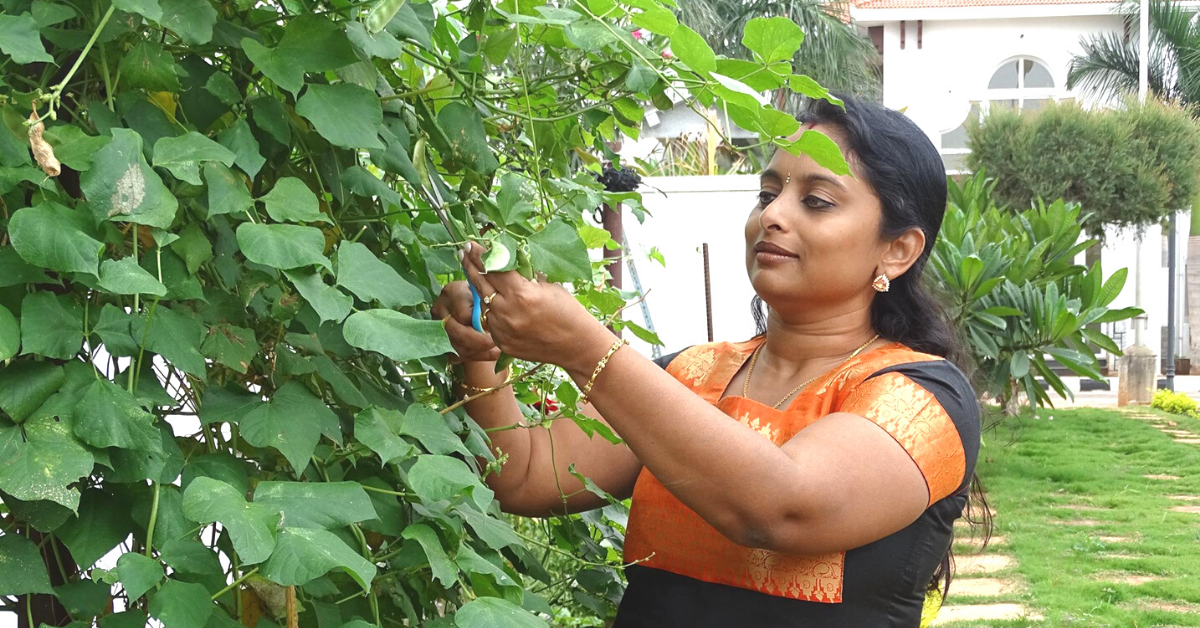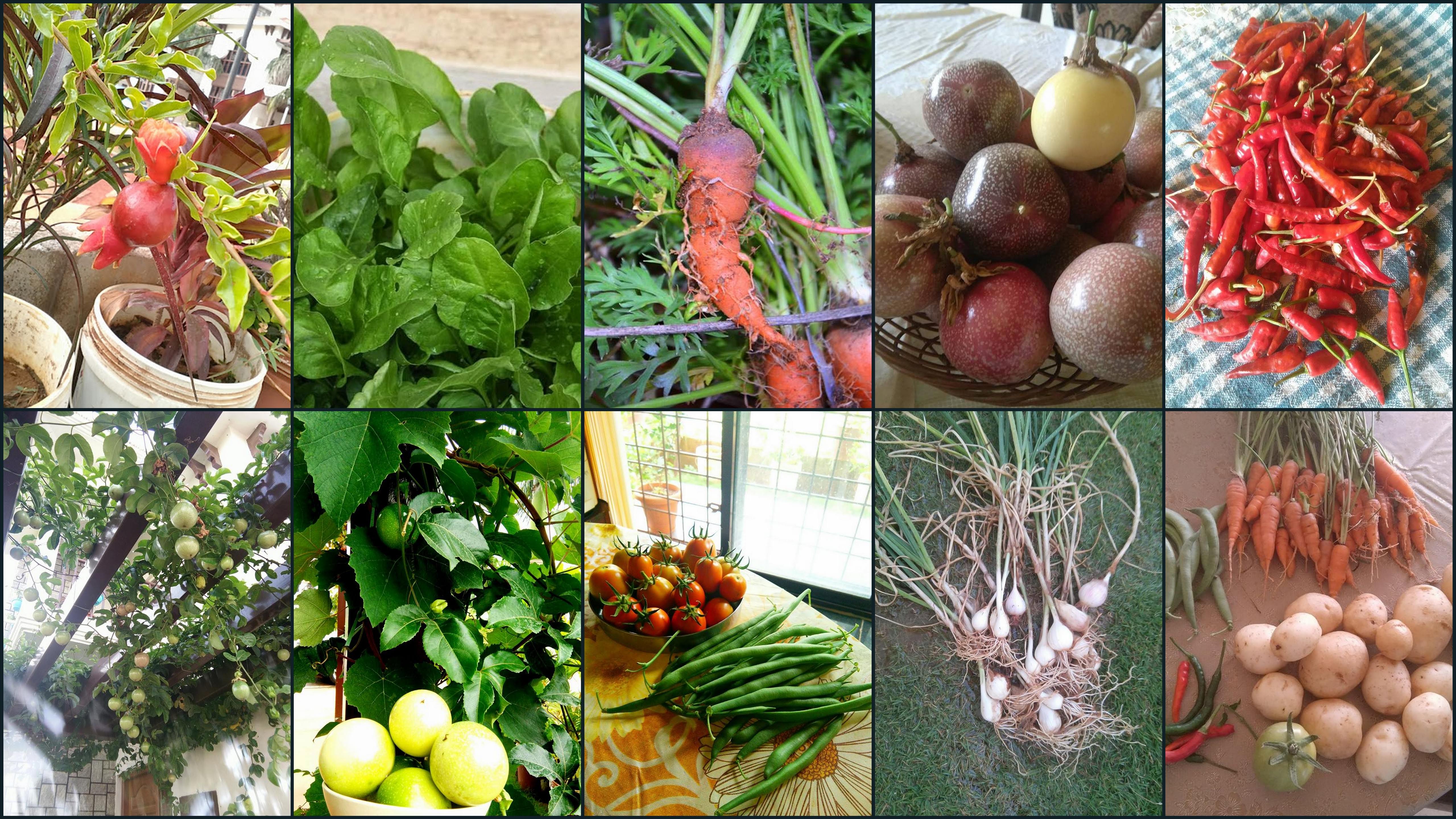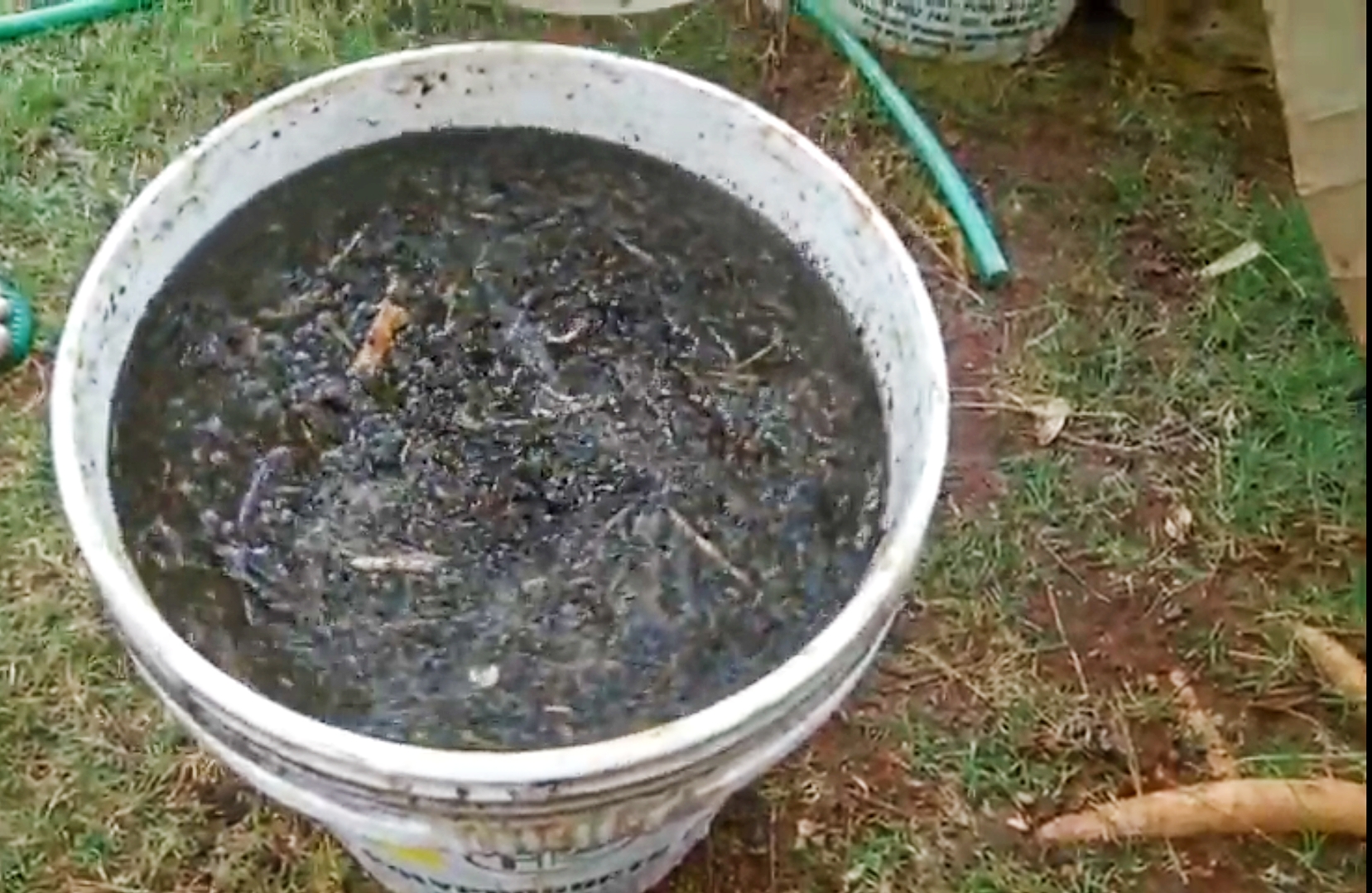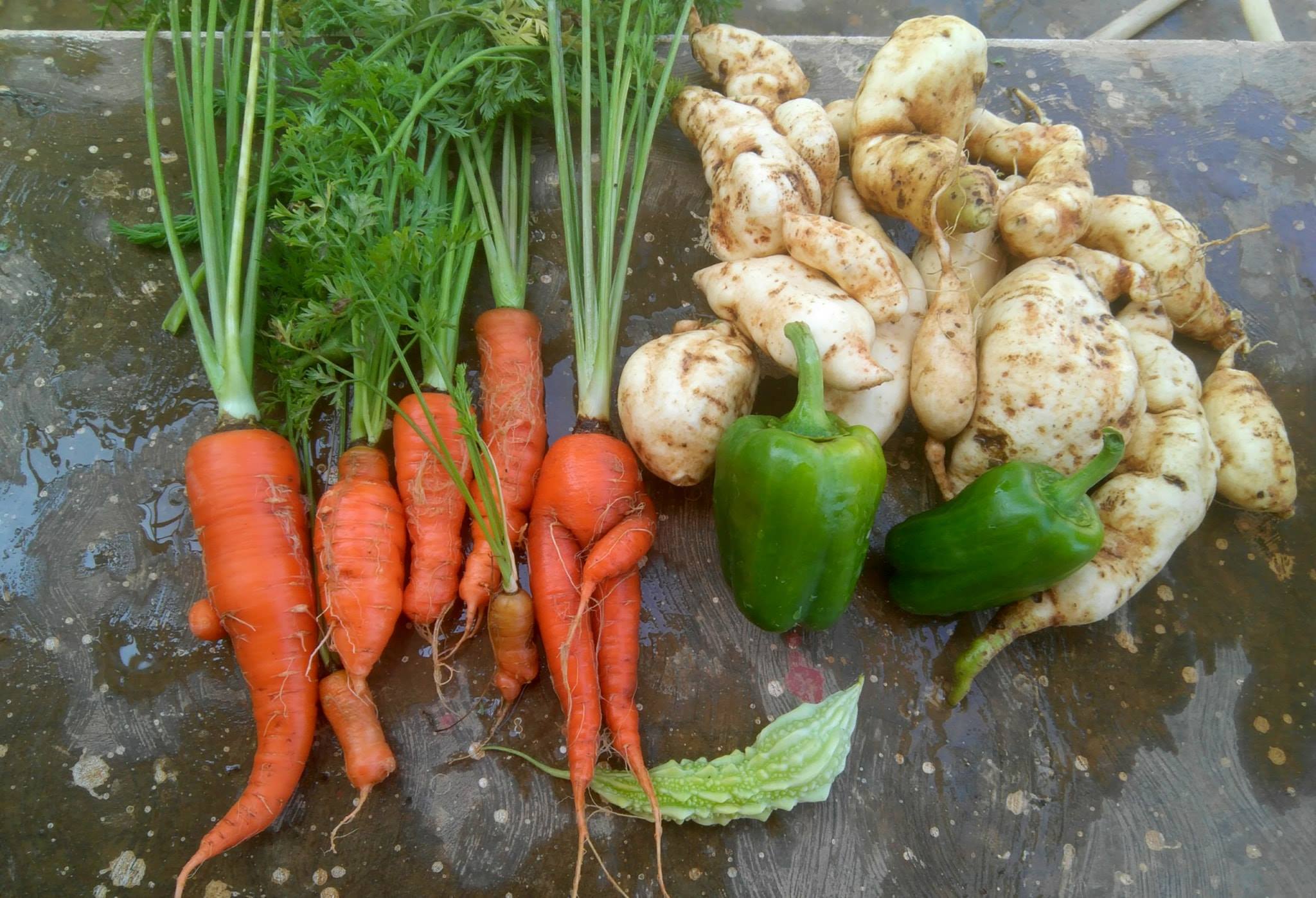Mint In Pots To Growing Veggies to Feed Her Family: B’luru Lady’s Inspiring Story
“We plan as per the season and often scour through the local nurseries to get our seeds etc. In terms of a daily time commitment, it takes us a good two hours each day."

Smitha Varma, 39, was first inspired to grow her own produce when she was living in the USA and was bothered by the non-availability of herbs like coriander and mint, that are staples in Indian cooking. “While a variety of vegetables are available in the US, specific herbs like coriander and mint weren’t always easily accessible, and that was one of the many reasons I took to growing them,” she explains.
It also helped that her father and maternal grandmother are avid gardeners. “I perhaps have it in my genes,” she laughs.
Looking to start composting at home? Do have a look at this composting pit!
Moving back to India
In 2013, Smitha moved to her parents’ home in Bengaluru. “Their home has an extended balcony, and the open space was such a refreshing change from earlier, where I would grow herbs and some fruits in small pots. So, I started growing tomatoes, beans, green chillies, and capsicum in around 40 to 50 pots,” she mentions.
Soon, Smitha started growing onions, garlic, beetroot, cabbage, and even carrots. In June 2016, she moved to a villa with her husband, Vivek, and daughters, Gayathri and Chinmayi. Here, she had an entire terrace, measuring about 900 sq ft, and continued gardening.

“While we have a majority of plants in the ground level, we also have a terrace garden that needs to be tended to as we have planted fruit trees in large containers, there. We also grow baby corn, pumpkin, chillies, cucumber, grapes, papaya, lemon, amla, cherry, and even rambutan,” she rattles on.
For Smitha and her family, gardening is a task that the family undertakes together. “My husband Vivek and I do it all ourselves—from planting the seeds, mixing the fertilisers and tending to them.”

Their daughters aged 16 and 10 years of age also help out as and when they find time from their school assignments.
When asked about how much time she devotes to the garden and also planning what vegetables to grow each season, Smitha says, “We plan as per the season and often scour through the local nurseries to get our seeds etc. In terms of a daily time commitment, it takes us a good two hours each day.”
Organic manure

Two years ago, Smitha decided to switch from buying organic fertilisers to making it at home.
“We started creating our own organic mixture for the garden—it includes cow dung and all the leaves that we can gather. We live in a semi-urban area, and hence sourcing of cow dung becomes easy. We make a fermented mixture that we use on our plants once in every 15 days,” she explains.
“We also make another mixture out of banana peels and eggshells that are very nutrient-rich for the flowers. Besides all this, we also have two compost tubes at home, so whatever wet waste we have goes directly into it,” she adds.
When asked about what sort of monetary investment this takes up, Smitha says, “It does depend on the scale at which you begin. We started small and would only source saplings and seeds from local nurseries; they are the plants that thrive in our conditions. Slowly we kept adding plants, and it grew. So, I would suggest that people start with 8 to 10 small pots and once they feel confident, they can invest in more.”
A few tips from Smitha:
- Space is never a constraint when you chose to grow your own food.
- You can use small pots, plastic containers, and even reuse egg trays to grow your greens.
- Ensure that your vegetable plants get enough and more sunlight, a minimum of four to five hours of direct sunlight.
- Start with the easy vegetables and herbs, that will give you the confidence to grow more and experiment.
- Always source seeds and saplings only from your local nurseries, they are most well-equipped with varieties that can grow given the climatic conditions.
- Do not plant exotic and imported quality of seeds and saplings.
- Planting too many things very close together can end up infecting all the plants, so be aware of that.
How to deal with disappointment?

Speaking from experience, Smitha says, “I have made countless mistakes and dealt with my fair share of disappointment as well. I remember once I planted cauliflower, and when I did, I did not know that it tends to get infested with worms and insects very easily, and I lost that entire crop.”
However, in the process, Smitha says, that she learnt about various herbal remedies that would help keep the insects and worms away.
Companion planting

An interesting point that Smitha learnt during her experiments is about companion planting, where different crops are planted close to each other for a number of different reasons, including pest control, pollination, maximizing use of space, and increase crop productivity.
Speaking about it, she says, “I learnt that planting garlic pods along with cauliflower will help keep the worms and insects away. So, I have planted two rows of garlic and a row on cauliflower in between them.”
Apart from ensuring farm-fresh nourishment for her family, Smitha’s garden is also helping her earn an extra Rs 5000 every month. “I sell them at the locality where I stay and have seen others getting inspired and growing their vegetables,” she remarks.
There is a growing consensus about the health benefits of growing your own food, and how it inspires people to make better choices about what they put on their plate.
“I agree. The idea of growing your own produce might seem overwhelming, but it’s actually much simpler than it sounds. And if you decide to do this, you know exactly what you and your family are consuming and have complete control over it. For me, nothing could be better than that,” she concludes.
Also Read: This Bengaluru Citizen ‘Adopted’ a Street To Transform It & You Can Do It Too!
(Edited by Gayatri Mishra)
Like this story? Or have something to share?
Write to us: [email protected]
Connect with us on Facebook and Twitter.
If you found our stories insightful, informative, or even just enjoyable, we invite you to consider making a voluntary payment to support the work we do at The Better India. Your contribution helps us continue producing quality content that educates, inspires, and drives positive change.
Choose one of the payment options below for your contribution-
By paying for the stories you value, you directly contribute to sustaining our efforts focused on making a difference in the world. Together, let’s ensure that impactful stories continue to be told and shared, enriching lives and communities alike.
Thank you for your support. Here are some frequently asked questions you might find helpful to know why you are contributing?


This story made me
-
97
-
121
-
89
-
167











